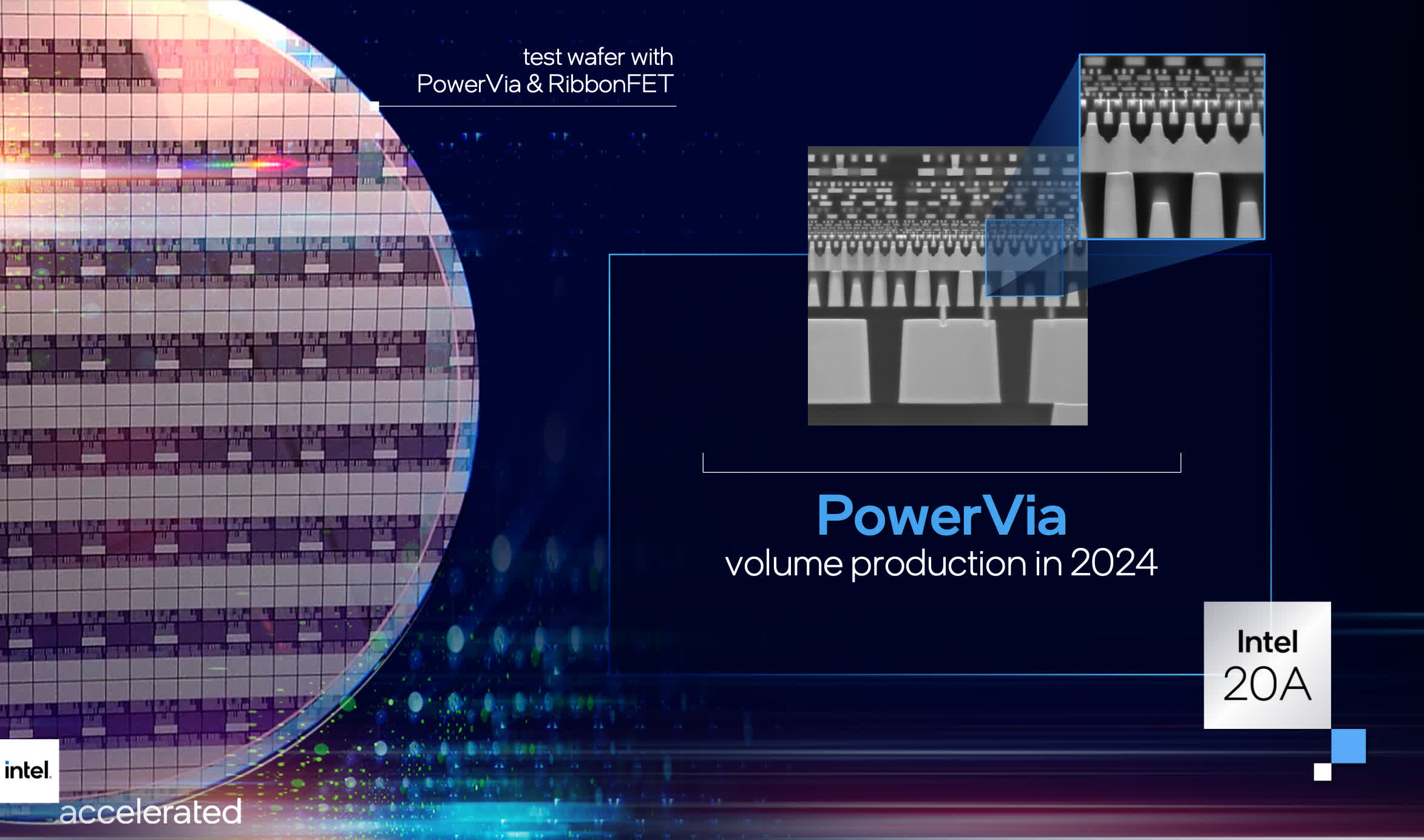Shots fired: As semiconductor manufacturers solidify their 3nm processes and intensify the race toward 2nm, TSMC and Intel have recently traded barbs over which company will have the superior node over the next few years. The Taiwan-based manufacturer is confident in its current path, but Intel aims to reassert dominance in the semiconductor industry by jumping to 2nm before anyone else.

Intel CEO Pat Gelsinger has claimed that its upcoming 18A process node (essentially 1.8nm) could outperform TSMC's 2nm chips despite launching a year earlier. The comments contradict recent claims from the Taiwanese competitor. Gelsinger made the remarks in an interview with Barrons.
He isn't sure if one node will significantly outperform the other but spoke optimistically about the company's release window. The outlet framed Intel's race with TSMC against the backdrop of US attempts to secure semiconductor supplies amid tension with China. As the market leader, TSMC provides the 3nm silicon for Apple's iPhone 15 and M3 Mac processors.
The company claimed that an upcoming optimized 3nm node called N3P will attain a power performance area comparable to Intel's 18A. The Taiwan giant expects to bring N3P into mass production in the second half of 2024 – around the same time as 20A (2nm) and 18A.

Additionally, TSMC is confident that its 2nm N2 node, slated for 2025, will outperform N3P and 18A. Following the company's inaugural 3nm process pattern, Apple could get first dibs on N2 and utilize it for the iPhone 17 Pro.
Much of Gelsinger's confidence in 20A and 18A lies in their introduction of the RibbonFET architecture – the company's take on gate-all-around (GAA) transistors and backside power delivery. These technologies will become crucial for companies manufacturing 2nm chips, enabling higher logic densities and clock speeds with reduced power leakage. Meanwhile, TSMC's N3P and other upcoming 3nm nodes will continue utilizing the mature FinFET architecture until it migrates to GAA with N2 a year after Intel.
Intel and TSMC aren't the only companies preparing to build 2nm semiconductors. Samsung also wants to enter 2nm mass production in 2025, while Japanese fabricator Rapidus plans to introduce prototypes by 2025, with mass production beginning in 2027.
https://www.techspot.com/news/101314-intel-ceo-claims-18a-node-least-match-tsmc.html